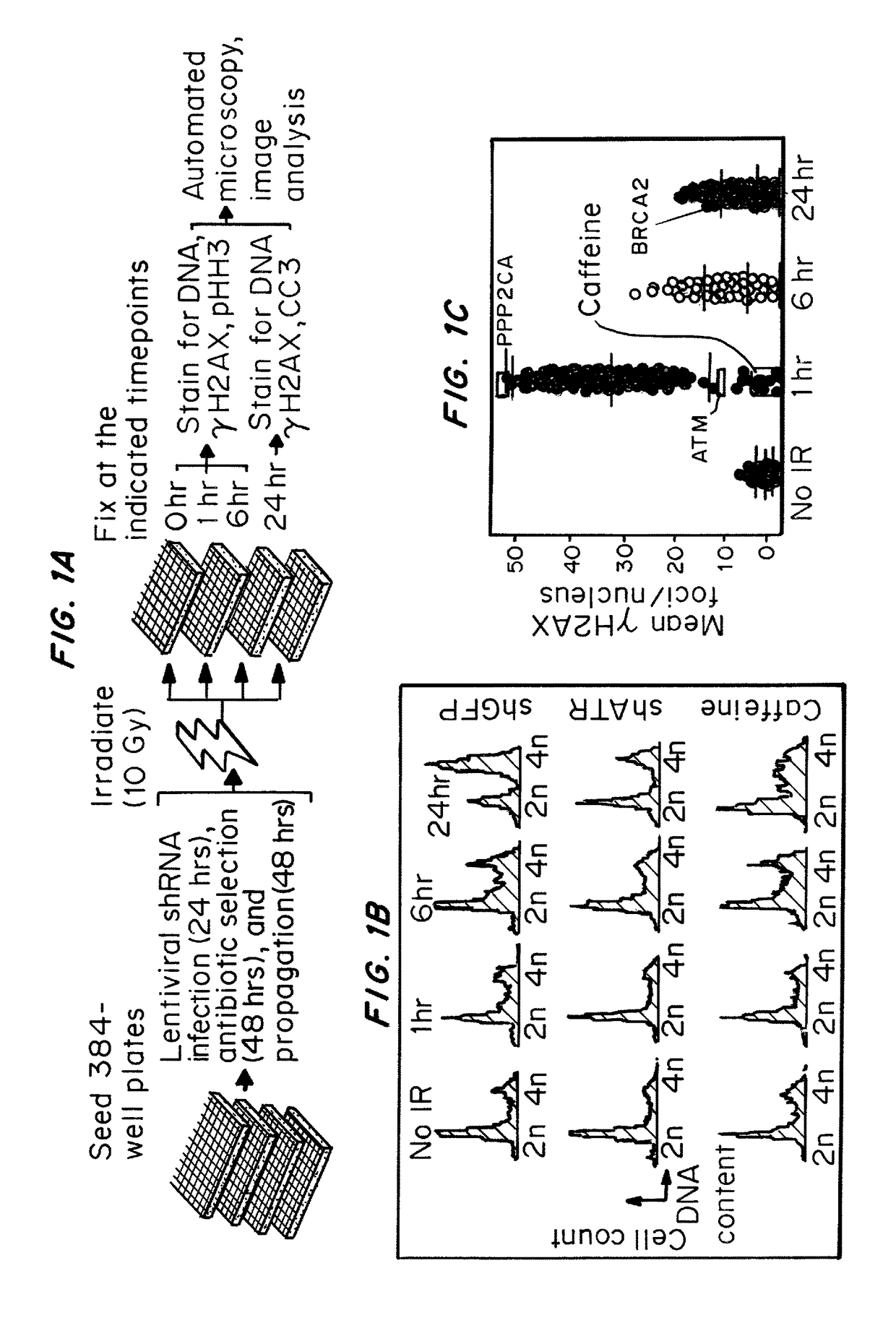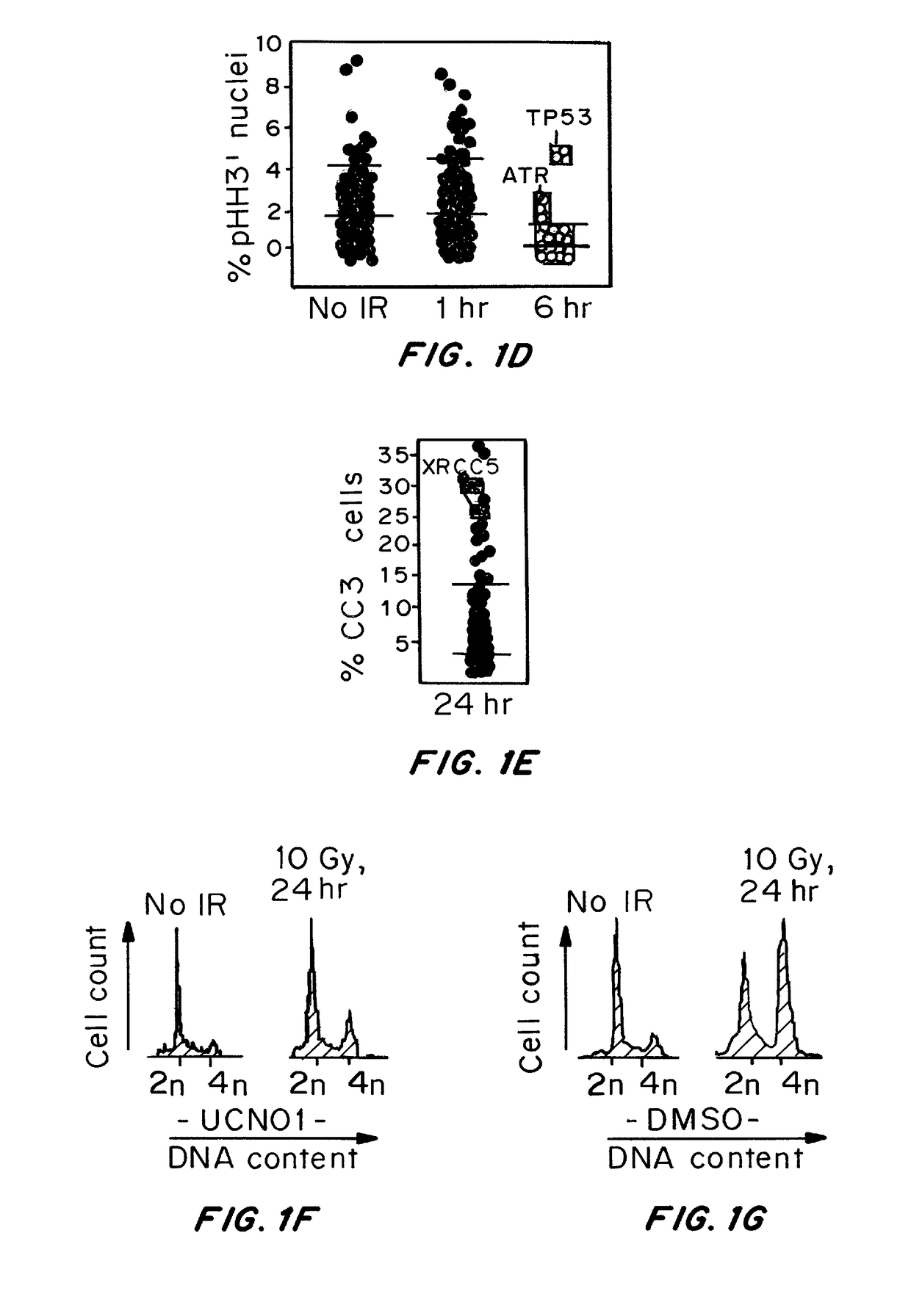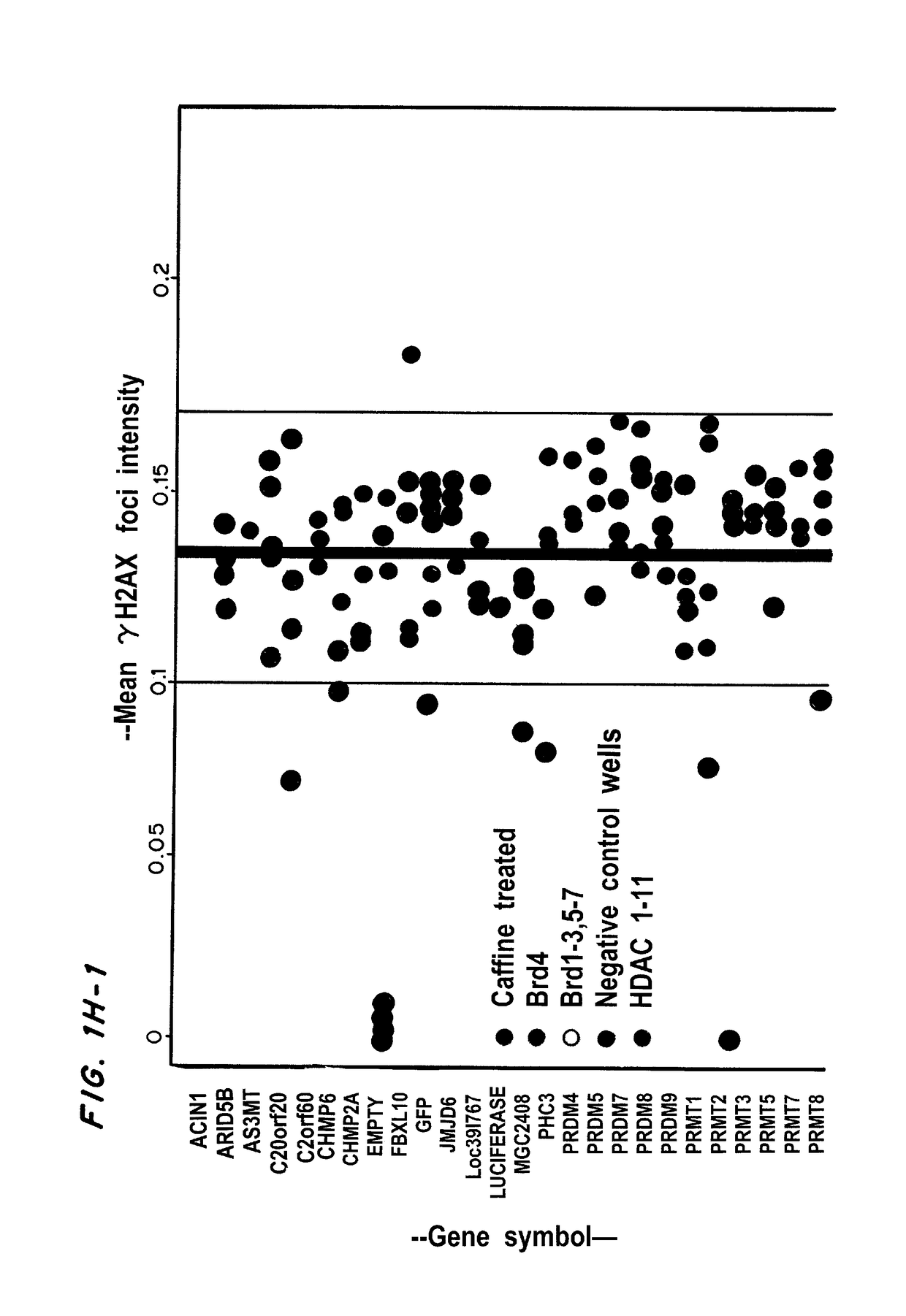Compositions and methods for modulating BRD4 bioactivity
a bioactivity and composition technology, applied in the field of compositions and methods for modulating cellular responses to dna damage, can solve the problems of increasing dna damage repair and reducing dna repair, and achieve the effect of reducing scarring and reducing overproliferation
- Summary
- Abstract
- Description
- Claims
- Application Information
AI Technical Summary
Benefits of technology
Problems solved by technology
Method used
Image
Examples
example 1
Expression of Brd4 Affects the DNA Damage Response
Materials and Methods
[0282]Antibodies and Stains
[0283]Mouse monoclonal antibodies against γH2AX were from Upstate / Millipore (cat. #05636), Actin (Sigma, cat. #A5441), and phospho-ATM Serine 1981 (Rockland, cat. #200-301400). Rabbit polyclonal and monoclonal antibodies against Brd4 were from Abeam (cat. #Ab46199), total H2AX (Abeam, cat. #ab11175), phospho-SO (Cell Signaling Technologies, cat. #2851), acetyl lysine (Cell Signaling Technologies, cat. #9441), cleaved caspase 3 (Cell Signaling Technologies, cat. #9664), phopho-histone H3 (Upstate / Millipore cat. #06570 and BD / Pharmingen cat. #559565), histone H3 acetyl lysine 14 (Abeam, cat. #ab52946). DNA stains were Hoechst 33342 (Invitrogen cat #H 1399) propidium iodide (Invitrogen cat. #P1304MP) and ethidium bromide (Invitrogen cat. #15585011).
[0284]Image-Based Screens
[0285]For both shRNA and small molecule screens, human U20S osteosarcoma cells (ATCC HTB-96) were grown in DMEM+Pen / St...
example 2
Enhanced Signaling from Damaged DNA is Observed in the Absence of Brd4
Materials and Methods
[0305]Pulsed Field Gel Electrophoresis and Micrococcal Nuclease Assay
[0306]For pulse field gel analysis, control and BRD4 knockdown cells were plated at 1×106 cells per plate, exposed to 10Gy IR with a 137CS source in a Gammacell irradiator (Atomic Energy of Canada, Ltd). and harvested at 0.5, 1, 2, 3 and 5 hour timepoints. Cells were trypsinized, diluted to 2×106 cells and embedded in agarose plugs. The agarose plugs were exposed to Proteinase K (1 mg / mL) in 500 mM EDTA, 1% N-Iauryl Sarcosyl, pH 8.0, for 48 hrs, washed 3×1 hr with TE buffer, loaded onto a 0.675% agarose gel, and separated under pUlsed-field conditions with a Rotaphor 6.0 (Biometra, www.biometra.com). Nuclei from control and Brd4 knockdown cells were isolated by hypotonic lysis and micrococcal nuclease assays performed as described by Carey and Smale, CSH Protoc., pdb.prot4890 (2007).
Results
[0307]One explanation for the result...
example 3
Brd4 Isoform B is a Suppressor of DNA Damage Signaling and Response
Materials and Methods
[0309]Flow Cytometry
[0310]3×106 U20S cells were plated and transiently transfected with pEGFP-C 1, isoform C, isoform B, isoform B, BD1 mutant, Brd4-NUT and truncated Brd4-NUT using Fugene 6 (Roche). These cells were exposed to 10 Gy Ionizing radiation and harvested 24 hrs later, fixed with 4% formaldehyde, extracted with 100% ethanol, processed for flow cytometry using the antibodies listed above. Data were analyzed using FlowJo (www.flowjo.com) software.
[0311]Colony Formation and CellTiter-Glo Assays
[0312]Control and BRD4 knockdown cells were exposed to 10Gy IR or left untreated, trypsinized, counted and re-plated using serial dilutions. Colonies were propagated to the 10-15 cell stage (3-7 days), stained with Wright stain and counted with CellProfiler software. CellTiterGlo (Promega) assays were performed in 96-well format according to manufacturer's instructions and analyzed on a Perkin-Elmer...
PUM
| Property | Measurement | Unit |
|---|---|---|
| pH | aaaaa | aaaaa |
| pH | aaaaa | aaaaa |
| aerodynamic diameter | aaaaa | aaaaa |
Abstract
Description
Claims
Application Information
 Login to View More
Login to View More - R&D
- Intellectual Property
- Life Sciences
- Materials
- Tech Scout
- Unparalleled Data Quality
- Higher Quality Content
- 60% Fewer Hallucinations
Browse by: Latest US Patents, China's latest patents, Technical Efficacy Thesaurus, Application Domain, Technology Topic, Popular Technical Reports.
© 2025 PatSnap. All rights reserved.Legal|Privacy policy|Modern Slavery Act Transparency Statement|Sitemap|About US| Contact US: help@patsnap.com



